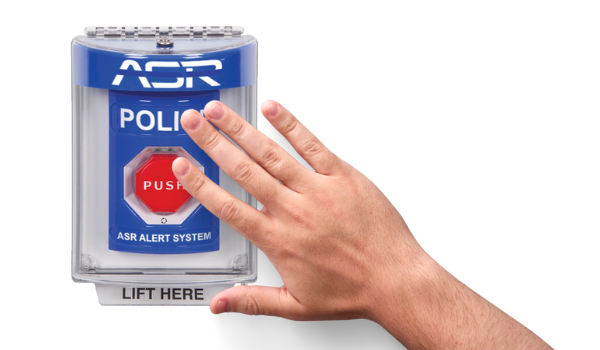
Alert Fatigue and How it Can Undermine Emergency Operations Plans
JUPITER, FL / AGILITYPR.NEWS / July 21, 2022 / Alert Fatigue and How it Can Undermine Emergency Operations Plans
Alert fatigue otherwise referred to as alarm fatigue, is a phenomenon that can occur when a person receives a large number of alerts over a period of time which then causes an individual to become desensitized to them. Alert fatigue can lead a person to ignore or fail to respond to safety alerts when they matter most.
In an active shooter situation, this can be deadly.
But how does this happen and why is it even a thing? How could a person get alert fatigue as it relates to crisis events? Surely folks aren't receiving large numbers of crisis alerts that would cause them to develop fatigue, right?
Wrong. The issue arises with HOW alerts are sent and received and it is wholly dependent on how crisis events are differentiated from other, less urgent alerts.

Leveraging Technology in an Emergency
Prepared organizations utilize technology to improve their emergency response plans, but oftentimes, organizations can make critical mistakes. In a life-or-death crisis situation, end-users must be set up for success. When an emergency begins, like an active shooter event, potential victims and emergency responders need clear, quick, and precise information. This means several things:
- Any technology intended for use as a panic button solution must be straightforward, easy to access, and have reliable communications.
- Any alerts for life-threatening situations must clearly communicate the gravity of the situation immediately.
- Any alerts received through the same technology platform that ARE NOT life-threatening must clearly communicate a different (reduced) level of urgency.

Panic Button Phone APPS
In recent years, affordable panic button APP solutions have flooded the life-safety market. These cost-effective solutions are extremely attractive options for organizations boot-strapped by tight budgets. Unfortunately, as more organizations opt for these cost-effective options, and as they are deployed in real-life crisis events, we are likely to see multiple shortcomings.
Alert Fatigue
If a panic button solution also incorporates alerts for other (less urgent) events, and if the notifications from the solution alert in the same way for both urgent and non-urgent situations, the end-users receiving all the alerts are likely to experience alert fatigue.
Case in point is the interim report from the investigative committee on the Robb Elementary shooting in Uvalde, Texas. The Texas House of Representatives outlines some details relating to the mobile APP panic button solution that was in place the day of the shooting.
From the July 17, 2022, Interim Report:
School district witnesses also testified to another effect of the rising prevalence of bailouts (border jumpers running from border patrol into the area). The alert system does not differentiate its signals between bailouts and other kinds of alerts, such as an active shooter situation. The series of bailout-related alerts led teachers and administrators to respond to all alerts with less urgency—when they heard the sound of an alert, many assumed that it was another bailout.
Hick's Law
Hick’s Law (or the Hick-Hyman Law) states that the more choices a person is presented with, the longer the person will take to reach a decision. If the panic button solution an organization has deployed has multiple alert types on one screen (as in a mobile APP), the user may become confused and take a much longer time to make a correct decision. This effect will be amplified in a crisis. A panic button in a life-threatening situation must be simple, accessible, straightforward, and immediate.
Motor Skill Issues In a Life-Threatening Emergency
During a crisis, many fine motor skills a person normally has full faculty over will likely be diminished or lost. First responders train for this stress and fear response, most civilians do not. In the event that violence should occur, every on-site person should be trained, prepared, and informed on the most effective actions they can take to protect their own safety and the safety of those around them. The process to summon help must be simple and fast.
Accessibility
Panic-Buttons solutions on a mobile application require access to a ready-to-go phone. Is the phone on you? Is it powered up? Do you have a cellular signal? Now imagine being 'motor skills compromised' (as outlined above). Where is the app on your phone? What does the icon look like again? What option do you choose on the app? When you call for help, who is getting the alert? Did your request go through? Is help on the way?

The ASR Solution
ASR strongly believes that having dedicated hardware that is readily available and easy to operate is KEY when it comes to life-saving tools. Our critical incident response technology uses hard-mounted buttons, mobile pendants, and a complement mobile phone application to DIRECTLY communicate with first responders in the area to significantly decrease response times to an active threat or crisis situation. In addition, by utilizing dedicated sirens and strobes (combined with optional alerts on mobile devices), the situation is clear to anyone and the response time is going to be incomparably faster and more reliable.
Having dedicated hardware that is readily accessible and easy to operate is KEY when it comes to life-saving tools.
The U.S. government and Fire Safety professionals DO NOT allow APPS to activate Fire Alarms within a building. So, why would you rely on an APP to alert your personnel of a life-threatening situation (like an active shooter) and be uncertain that law enforcement has been notified and is responding?
Our solution is a straightforward and easily identifiable button on the wall that says POLICE. Even in a stressful and life-threatening situation, those under attack can easily identify the button, push it, and then proceed with life-saving protocols like running and hiding from the attacker. The focus is taken off of the details needed to inform first responders and is transferred into more time to get away from the danger. With actionable information from the system, first responders know what is happening, where it is happening, and who it is happening to - all with the push of a button.
While apps are generally always a more cost-effective way to implement a panic button system, a decision-maker must consider the system as it would operate in a real-world crisis. If an organization is truly focused on the system saving lives, the system must have redundancy, ease of use, accessibility, and be able to communicate instantly. Anything that requires a victim to interact or that is reliant upon devices that may or may not be readily accessible (or properly activated such as location sharing) has a high likelihood of failure and inadequacies at the time that reliability is needed the most.
Contacts

Shay Discepolo
Media
shay@asralertsystems.comJupiter, FL
Phone: 800-722-7601
https://www.asralertsystems.com/blog/alert-fatigue